Types of handholes
Types of handholes in terms of Applications
Wastewater handhole
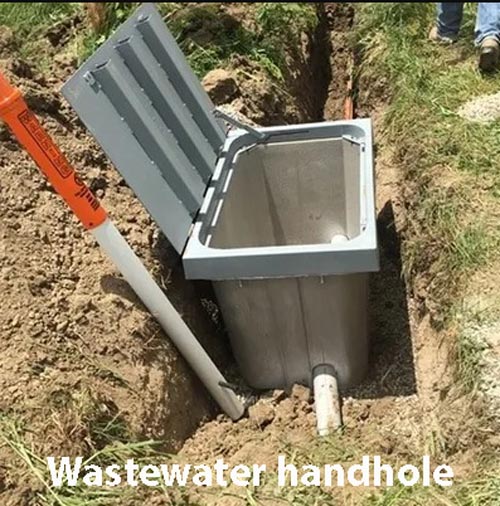
A wastewater handhole is a metal or concrete structure used for access, repair, and maintenance of the sewer system. Wastewater includes sewage water collected from homes, buildings, and industries, contributing to water resources and environmental preservation. The wastewater handhole serves as a tunnel or passage for entry into the sewer system.
The installation of wastewater handholes is necessary to provide access to the sewer system for easy repair, ensuring proper system functioning. Wastewater handholes are usually installed at strategic points such as main intersections, directional changes, and specific locations in the sewer system.
These handholes typically have openable and closable doors to facilitate access to the pipes and equipment inside. Additionally, for unauthorized access prevention and safety purposes, wastewater handholes are usually locked.
The use of wastewater handholes in the maintenance and repair of the sewer system helps increase its service life and minimize maintenance and repair costs.
Gas handhole
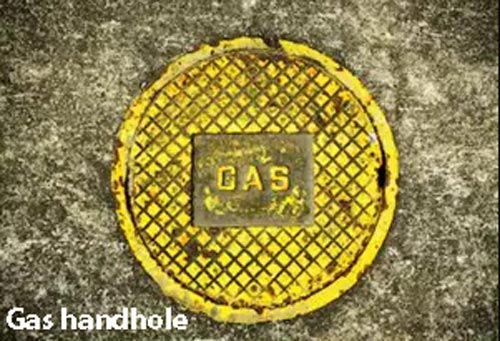
A gas handhole is a metal or concrete structure used for connection and repair of the gas network and access to gas pipes. The gas network is a system that supplies natural gas from sources and transports it to various areas in a city or region for use in homes, buildings, and industries.
The installation of gas handholes is essential to provide easy access to gas pipes and equipment in case of repairs. These handholes are typically installed at strategic points such as main intersections, directional changes, and specific locations in the gas network system.
Gas handholes usually have openable and closable doors to facilitate the repair and maintenance process. Additionally, to ensure safety and prevent unauthorized entry, gas handholes are equipped with locking systems.
The use of gas handholes in the repair and maintenance of the gas network allows technicians to easily access the pipes and equipment, thereby increasing the service life of the gas network. Furthermore, these structures help reduce maintenance and repair costs while ensuring the safety of the gas system.
Electrical handhole
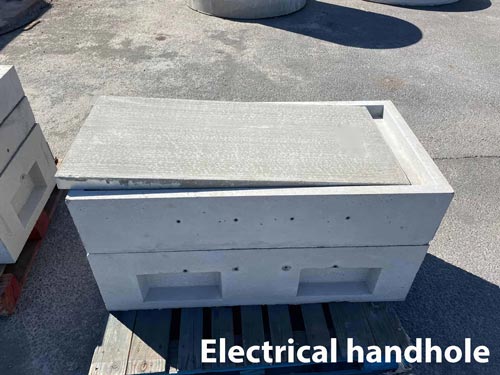
An electrical handhole is a metal or concrete structure used to access power cables and equipment associated with the power grid. The power grid is a system that transports generated electricity from power plants or other sources to different areas in a city or region, making it available for use in homes, buildings, industries, and other needs.
Electrical handholes are usually installed at strategic points, including main intersections, directional changes, points of connection to transformers, and main equipment of the power grid. These structures allow technicians and relevant personnel to quickly and efficiently access the cables and electrical equipment for necessary repairs and maintenance.
Electrical handholes usually have openable and closable doors to facilitate the repair and maintenance process. Additionally, to prevent electrical accidents and ensure safety, electrical handholes are equipped with safety systems and warning signs.
The use of electrical handholes in the repair and maintenance of the power grid is of great importance. These structures enable technicians and relevant personnel to easily access cables, components, and electrical equipment, thereby extending the service life of the power network. Moreover, these handholes help reduce maintenance and repair costs while ensuring the safety of the electrical system.
Telecommunications handhole
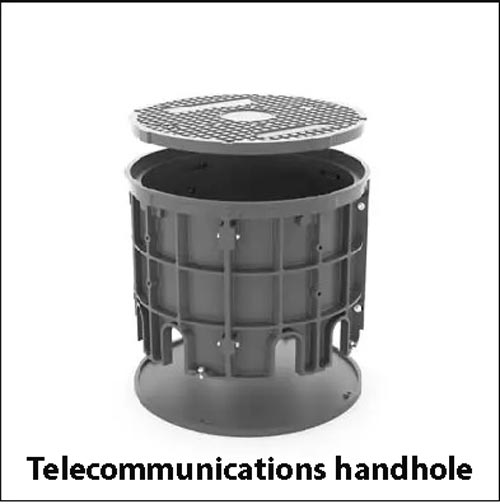
A telecommunications handhole is a physical structure used for installation, maintenance, and repair of cables, equipment, and communication facilities in telecommunications networks. Telecommunications networks facilitate the transmission of voice, video, and data between two or more points. These networks include telephony, internet, television, radio, and other communication systems.
Telecommunications handholes are used as vital infrastructure in telecommunications networks. These structures typically include pipes, cables, communication equipment, and communication wires used for data transmission and connectivity between different points in the network.
Telecommunications handholes allow technicians and professionals involved in the installation, repair, and maintenance of telecommunications networks to easily access the equipment, cables.
Types of handholes in terms of materials:
Metal handhole: These types of handholes are made of metal materials such as steel, aluminum, or iron. They are strong, impact-resistant, and capable of supporting heavy equipment. Metal handholes are used as one of the primary options for electricity and communication transmission.
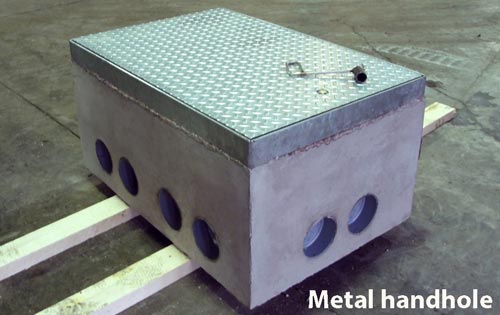
Concrete handhole: These handholes are made of concrete material. They are strong and resistant to pressure and heavy loads. Concrete handholes are mostly used for sewage, water, and telephone line transmission.
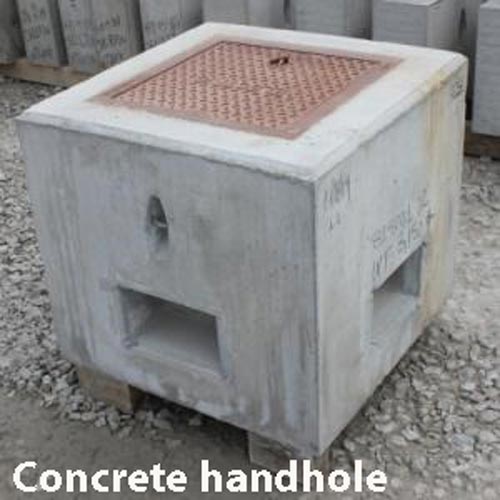
Soil handhole: Soil handholes are essentially a network of underground pipes and channels in the soil used for the transmission of various cables and pipes, including electricity, communication, and water. They are usually made with materials resistant to corrosion and waterproofing.
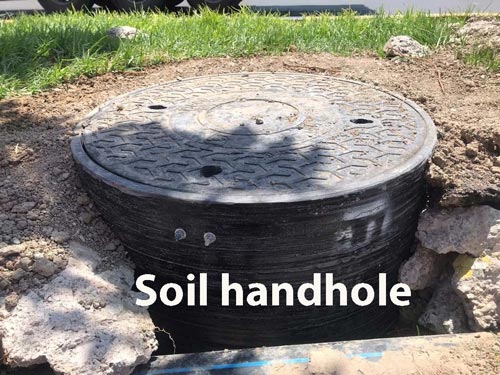
Plastic handhole: These handholes are made of plastic materials such as polyvinyl chloride (PVC) or polyethylene. They are lighter and more impact-resistant than metal handholes and are useful in environments that require electrical insulation.
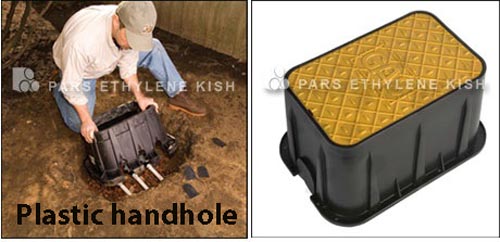
Types of plastic handholes:
PVC handhole: PVC (Polyvinyl Chloride) handhole is made of polyvinyl chloride material. Polyvinyl chloride is a type of plastic that is widely used for various purposes due to its characteristics, including flexibility, heat resistance, chemical and corrosion resistance, and cost-effectiveness.
Polyethylene handhole: Polyethylene conduit handhole is made of polyethylene material. Polyethylene is a type of plastic that is used for the transmission and protection of wires and cables in various industries due to its unique properties and characteristics. This type of handhole is used for sewage, water, gas, and telecommunications due to its lightweight, high resistance to water and heat, and chemical corrosion resistance.
Polyethylene handholes are ideal solutions for the transmission of wires and cables in the ground, walls, buildings, and underground due to their high resistance to corrosion, heat, impact, moisture, and chemical environments.
Polyethylene handholes have features such as high flexibility, lightweight, electrical resistance, insulation, and long durability. These features make polyethylene handholes widely used in industries such as electricity, telecommunications, construction, water and sewage, and other similar industries.
By using polyethylene handholes, cables can be protected in various environments and safeguarded against external factors, preventing risks of corrosion, moisture, and mechanical damage.
Composite handhole: Composite handhole is made of a combination of different materials such as carbon fiber, fiberglass, and resin. This type of handhole usually has features such as lightweight, high resistance to corrosion and impact, and electrical insulation. Due to these characteristics, composite handholes are used in various industries such as aerospace, automotive, and energy.
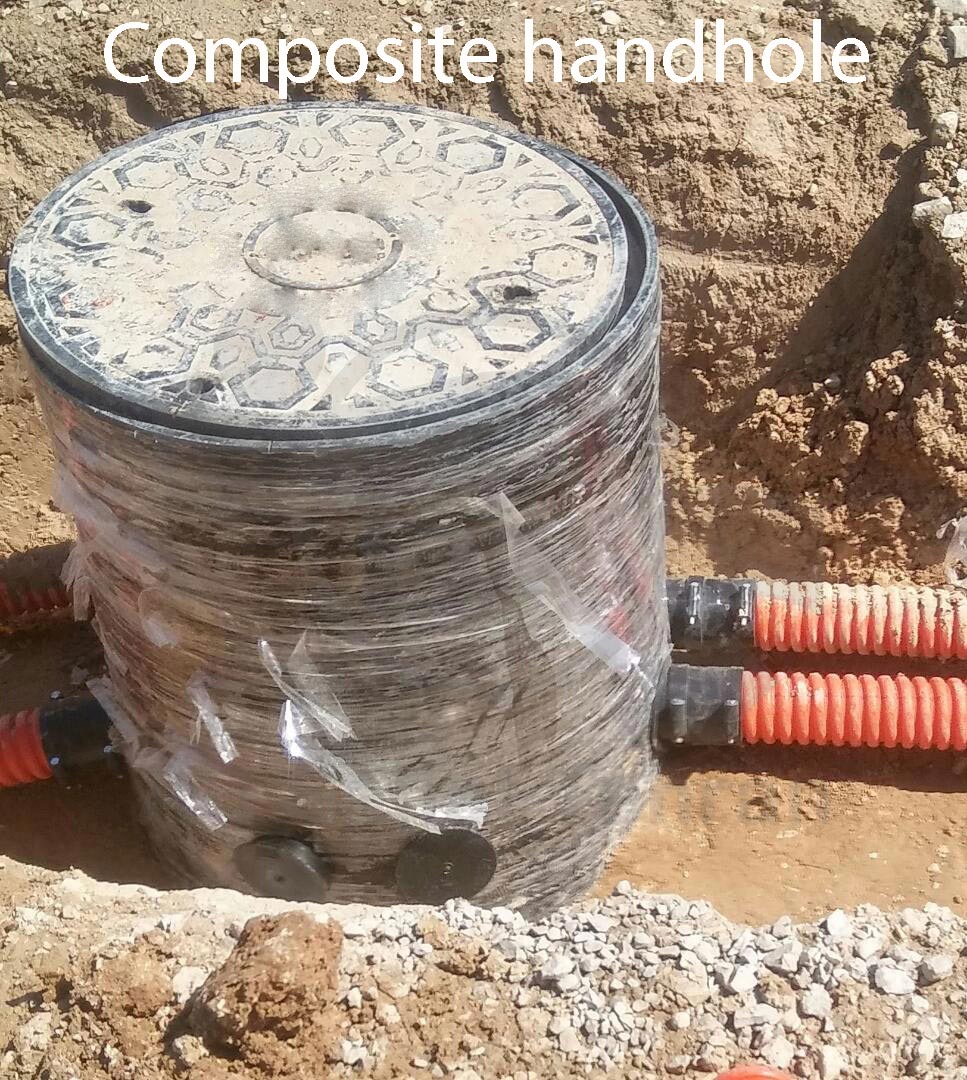
What is Precast handhole:
Precast handhole: Precast handhole is a type of handhole that is premanufactured and made in installable block forms. These blocks are produced in specific lengths and are connected to each other at the installation site. Precast handholes are used in large-scale construction and infrastructure projects due to the ease and speed of installation, cost reduction, and the possibility of making quick changes and repairs.
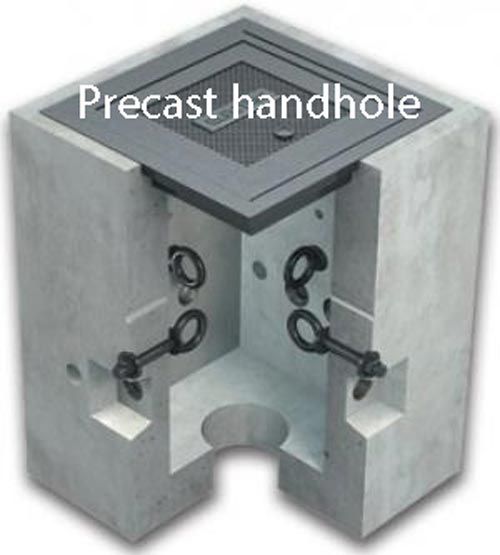
Read More: